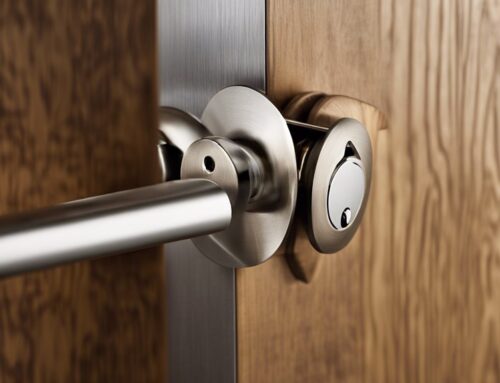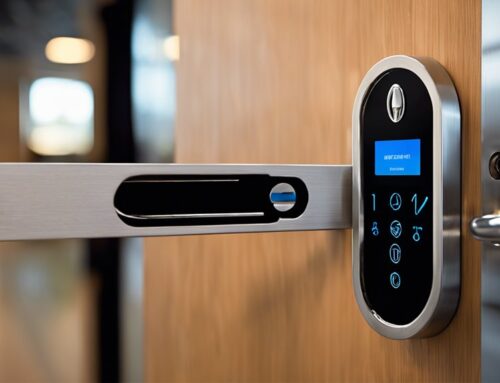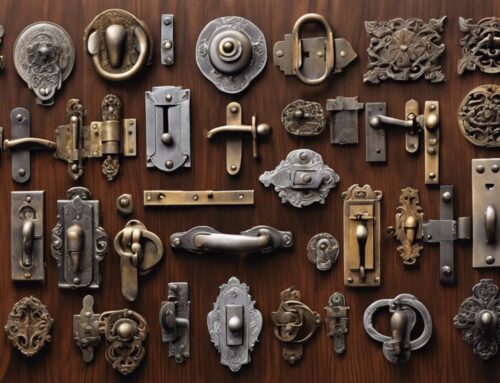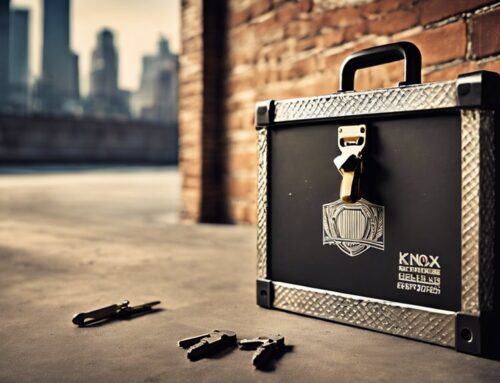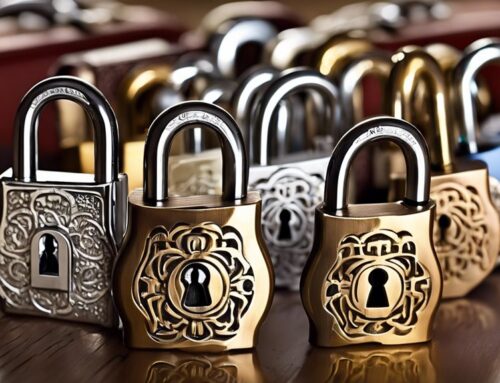You might think disc tumbler locks are just another type of security device, but their history and mechanics actually reveal a fascinating evolution of lock technology. These locks, developed in the mid-19th century, introduced a range of benefits that set them apart from traditional pin tumbler systems. By understanding how they work and the innovations they brought to the field of locksmithing, you’ll discover why they remain influential today. So, how exactly do these locks function, and what makes them so durable in the face of modern security challenges?
Key Takeaways
- Disc tumbler locks, developed in the mid-19th century, revolutionized security by offering more complex key combinations than traditional pin tumblers.
- They function using rotating discs that align with specific notches on the key to disengage the locking mechanism.
- The design minimizes vulnerability to picking, bumping, and drilling, enhancing overall security for high-value assets.
- Disc tumbler locks are constructed from durable materials, ensuring longevity and resistance to wear over time.
- Their advanced security features have influenced locksmithing practices and established new standards in security device design.
Overview of Disc Tumbler Locks

Disc tumbler locks, which are often found in high-security applications, operate based on a unique mechanism that enhances both durability and resistance to tampering.
Unlike traditional pin tumbler locks, these systems utilize rotating discs that interact with a cam, requiring precise alignment to open. When you insert the correct key, it turns the discs to their designated positions, allowing the lock to open.
This design minimizes susceptibility to picking and bumping, ensuring robust security. Moreover, the materials used in disc tumbler construction often withstand harsh conditions, increasing longevity.
Understanding these mechanisms equips you with insights into why disc tumbler locks excel in protecting valuable assets, making them a preferred choice for security-conscious environments.
Historical Development and Impact
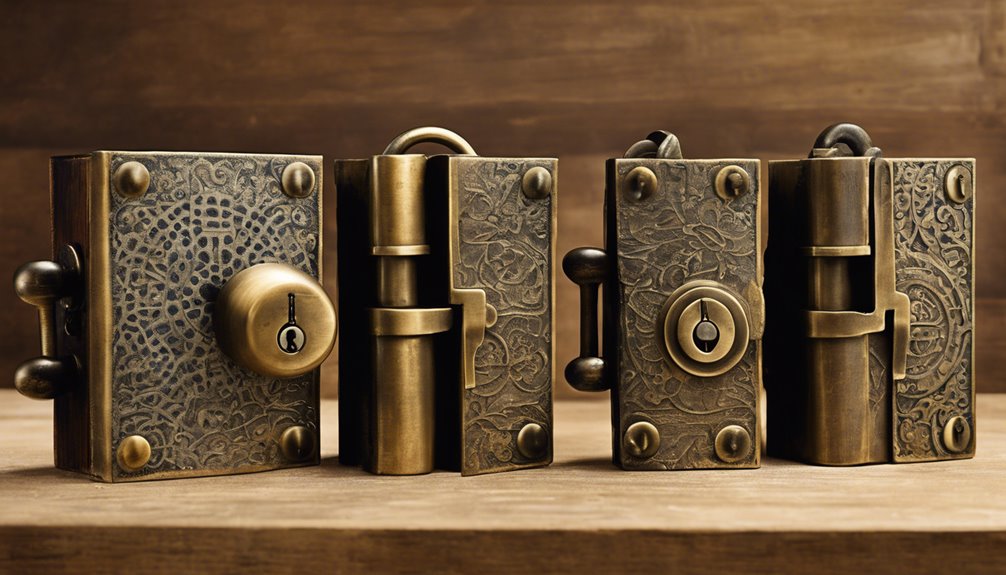
The evolution of lock technology has seen significant advancements, with disc tumbler locks emerging as a prominent solution for enhanced security. Developed in the mid-19th century, these locks utilized rotating discs to provide a higher level of protection compared to traditional pin tumblers. The process of lock re-keying further illustrates the adaptability of modern locks, allowing for enhanced security without the need for complete lock replacement.
Their design allowed for a greater number of key combinations, making unauthorized access increasingly difficult. As you explore their history, you’ll find that these locks gained traction in safes and high-security applications, influencing modern locksmithing practices. The integration of disc tumblers set new standards in security, prompting innovations in both design and manufacturing. Consequently, the impact of disc tumbler locks extends beyond their era, shaping the future of security devices and customer expectations for robust theft prevention. Furthermore, their advanced features contribute to what makes them superior to standard locks.
Security Features Explained
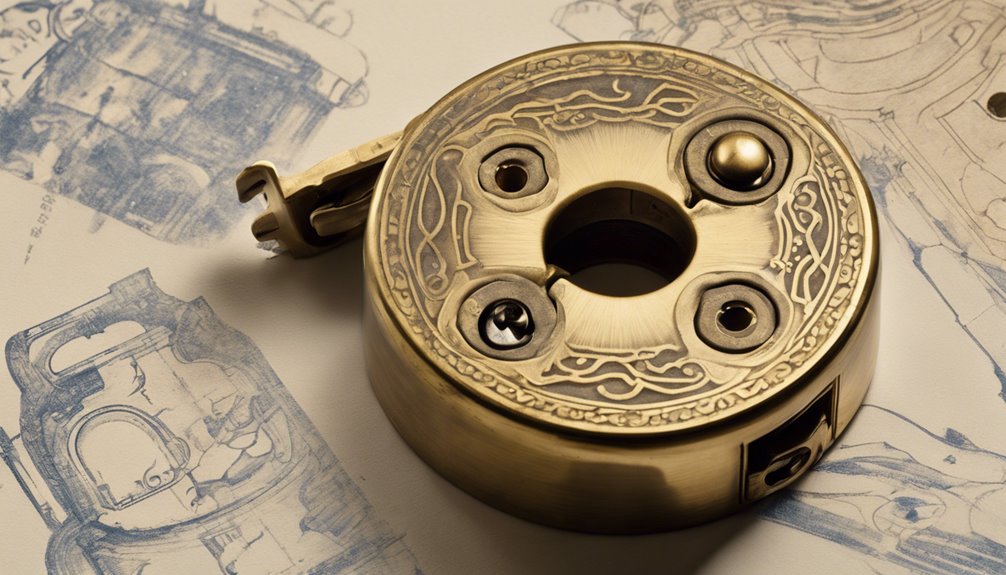
When examining the security features of disc tumbler locks, you’ll find that their design offers several advantages that greatly enhance protection.
The unique configuration of rotating discs makes picking more difficult, as each disc must align precisely to release the bolt. The lack of protruding pins further reduces vulnerability to drilling attacks, as the lock’s internal components are well-protected. Additionally, these locks are often recognized for their ability to resist common attacks such as bump keys and lock picking, further contributing to their reliability.
Moreover, the high tolerance between the disc and casing minimizes key duplication risks; even minor variations in a key will likely fail. Many models also integrate anti-lock bumping technology, thwarting common forced entry techniques. Furthermore, their advanced features provide enhanced resistance to tampering, similar to high-security locks, making them a reliable choice for secure environments.
Operating Principles of Lock Mechanism
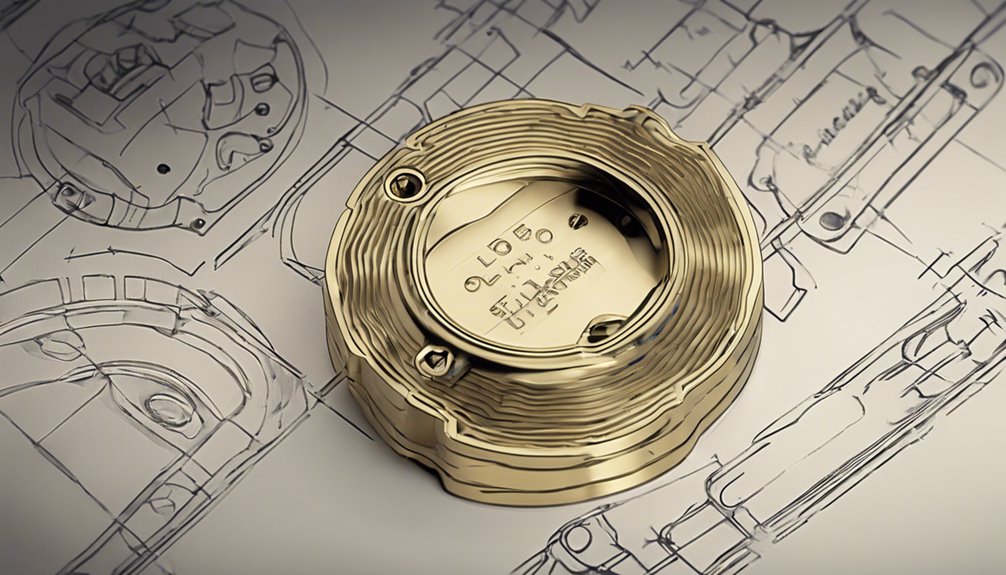
Understanding the operating principles of a lock mechanism reveals the intricate dance of components working in harmony to secure access. At the core, the disc tumbler lock employs rotating discs that align to permit the bolt to move. Each disc has specific notches that correspond with the key. When you insert the key and turn it, the discs rotate, aligning the notches; this action disengages the locking mechanism. This complex arrangement highlights how tumblers play a crucial role in maintaining lock security while also posing a risk of manipulation. Moreover, the precise interaction of each component, including the lock pins, ensures that unauthorized access is effectively thwarted.
| Component | Function |
|---|---|
| Key | Activates the lock mechanism |
| Discs | Rotate to align notches |
| Notches | Determine if the lock will open |
| Bolt | Provides physical security |
| Cylinder | Houses the discs and bolt |
This precise interaction guarantees that only the correct key can release the mechanism, safeguarding your security.
Comparison With Other Lock Types
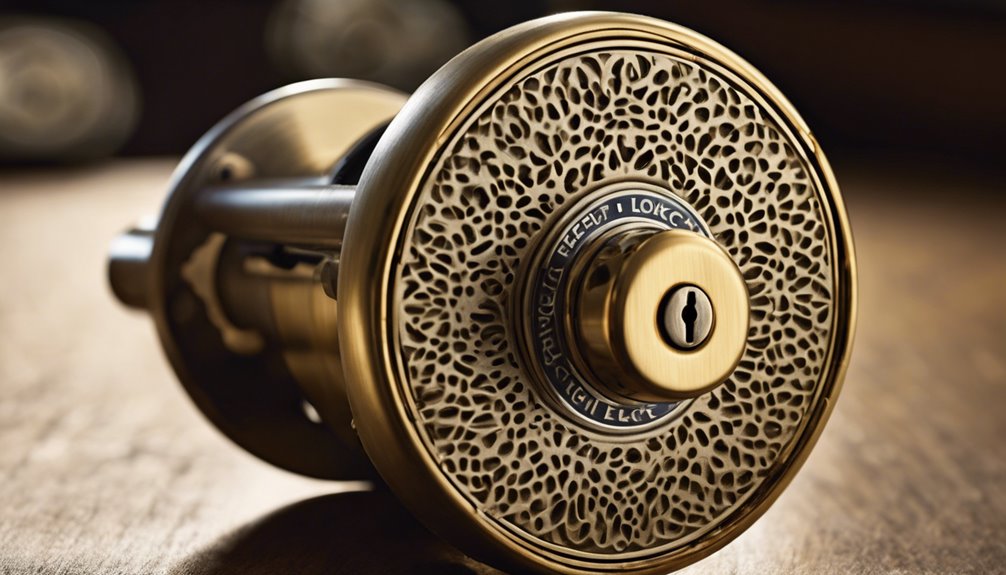
While many lock types offer varying degrees of security, disc tumbler locks stand out due to their unique design and operational advantages. Unlike pin tumbler locks, which can be vulnerable to picking, disc tumblers utilize rotating discs that require precise alignment to open. This mechanism considerably reduces the chance of unauthorized entry through traditional manipulative methods. Additionally, high-security locks often integrate advanced features to enhance protection against unauthorized access.
Additionally, when you compare them to lever locks, disc tumbler locks tend to have smaller profiles, making them more versatile for various applications. Their resistance to wear and less likelihood of jamming also enhance longevity. Moreover, high-security locks, including disc tumblers, often feature patented key control systems, ensuring only authorized access and preventing unauthorized duplication.
In environments where durability and reliability are paramount, disc tumbler locks emerge as a superior choice, balancing security needs with practical functionality.
Frequently Asked Questions
How Do I Maintain a Disc Tumbler Lock?
To maintain your disc tumbler lock, regularly clean it to prevent dirt buildup.
Use a can of compressed air to blow out debris from the keyway and tumblers. Lubricate the lock with a graphite-based lubricant, as oil can attract dust.
Make sure to test the key periodically, ensuring smooth operation.
Finally, check for any signs of wear or damage, and address issues promptly to prolong your lock’s lifespan and security effectiveness.
Can Disc Tumbler Locks Be Rekeyed?
Yes, disc tumbler locks can be rekeyed.
You’ll need to disassemble the lock, carefully removing the discs without damaging them.
Once you’ve accessed the core, replace the tumblers with new ones that match your desired key.
It’s a precise task requiring attention to detail; even a small oversight can prevent the lock from functioning correctly.
If you’re unsure, consider consulting a locksmith to guarantee everything’s done right for maximum security.
What Tools Are Needed for Disc Tumbler Locks?
To work with disc tumbler locks, you’ll need a few essential tools for effective manipulation.
Start with a set of lock picks, including specific picks for disc tumblers. You’ll also want a tension wrench to apply the right amount of pressure while picking.
A flashlight may be beneficial for visibility inside the lock.
Finally, a rekeying kit can help you change the lock’s positions if you need to modify the keying.
Are Disc Tumbler Locks Weatherproof?
Disc tumbler locks aren’t inherently weatherproof, but many models are designed with weather resistance in mind.
If you’re considering outdoor use, look for locks with sealed mechanisms or corrosion-resistant materials. These features will help protect against moisture and dust.
However, it’s vital to regularly maintain the lock, ensuring it stays functional even in harsh conditions.
How Long Do Disc Tumbler Locks Last?
When you consider the durability of disc tumbler locks, you’re balancing security with longevity.
Typically, these locks can last anywhere from 10 to 20 years, depending on usage and environmental conditions.
However, neglecting maintenance can greatly shorten their lifespan.
Regular lubrication and care enhance their performance, while exposure to harsh weather can lead to wear.
Ultimately, while these locks offer robust protection, their longevity hinges on how well you maintain them.
Conclusion
In today’s world of increasing security threats, the reliability of disc tumbler locks stands in sharp contrast to more vulnerable traditional locks. They offer a perfect balance between intricate design and robust protection, making even the most seasoned locksmiths consider their superiority. As technology advances and methods of unauthorized access evolve, understanding and valuing the mechanics of disc tumbler locks highlights their enduring significance in safeguarding our belongings, showcasing innovation in a landscape often plagued by compromise.

